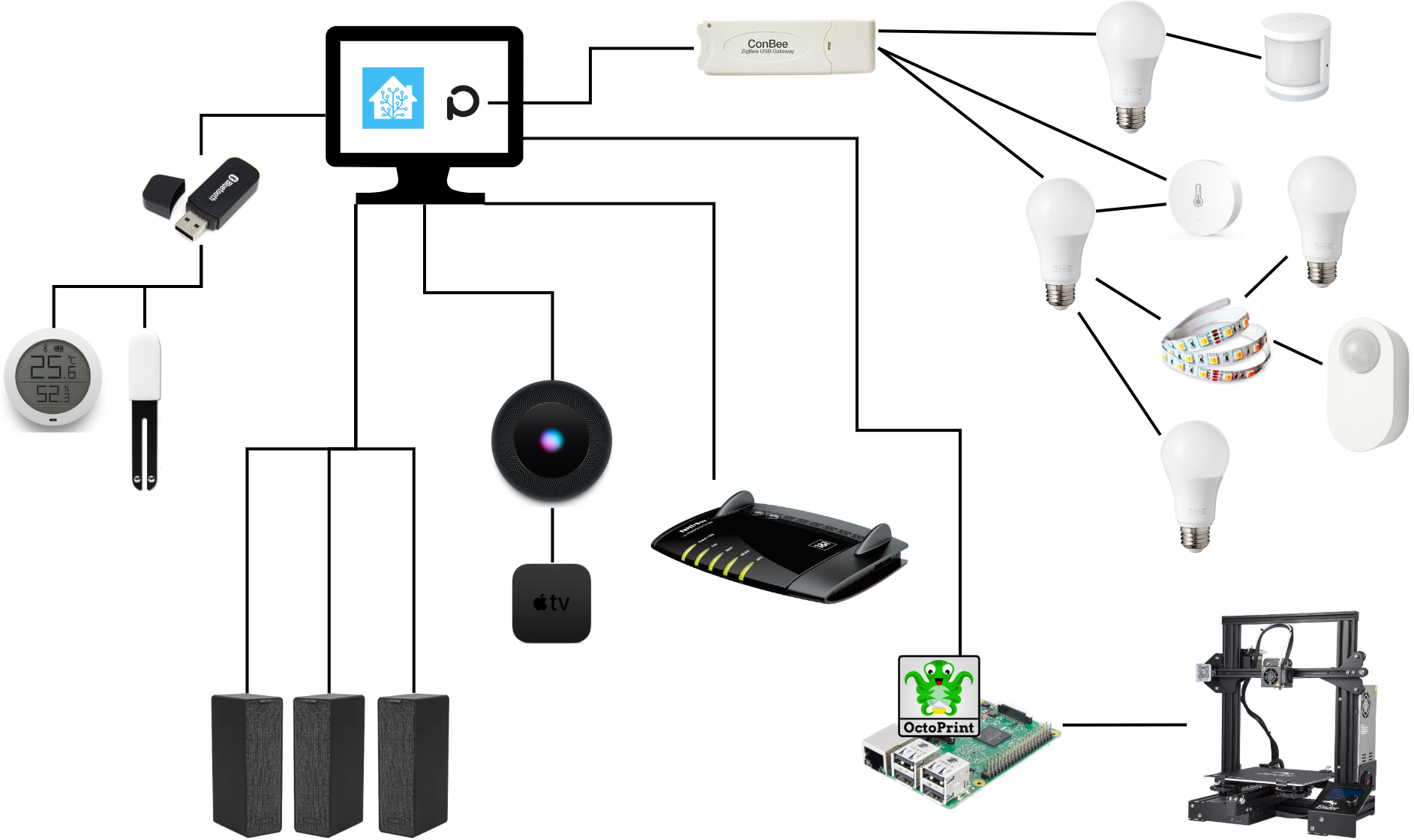My Home Automation Setup

In this post, I would like to provide an overview of my home automation setup. I will try to keep it concise as well as up to date when things change.
This is an overview of the devices and components that form my home automation system.

The Server
The brain of the system is an older desktop tower PC.
CPU: AMD Athlon X4 860K
Host system: Debian
Wired ethernet connection
Conbee USB stick as Zigbee gateway
Bluetooth stick for bluetooth sensors
Home Assistant
Home assistant is running in a Python virtual environment as described in the alternative installation methods in the Home Assistant documentation. I find it a lot more simplistic than running home assistant in docker. However, I am considering switching to Hass.io in a docker container to be able to leverage the Hass.io plugins.
Home Assistant upgrades are done by keeping the old virtual environment installation (renaming the folder), making a backup of the configuration folder, and making a new virtual environment install. This way I can easily revert back to any old installation, which saved me at least once.
Other Software on the Server
The server is also running a deconz community docker container. The container includes deconz, which is a software to control Zigbee network; as well as the Phoscon app that can be used to configure, group and control Zigbee lights and sensors.
All lights and sensors as well as groups from Phoscon are available in Home Assistant via the deconz integration.
In the future, I plan to add a MQTT server, a MySensors gateway and Grafana to the server.
Zigbee Devices
My Zigbee devices include a number of smart lights, as well as different sensors.
Xiaomi motion sensors (also measure light intensity)
Xiaomi temperature/humidity sensors
Xiaomi door/window sensors
Xiaomi vibration sensor
Ikea Trådfri motion sensors
Some Zigbee switches from Xiaomi and Ikea
Ikea Trådfri smart lights (mostly white spectrum lights and some color spectrum lights)
1 Xiaomi RGB light
1 Osram smart RGB LED stripe
2 Phillips Hue lights
Bluetooth Devices
Currently only 2 sensors are connected via Bluetooth:
Xiaomi Mi Flora plant sensor for soil moisture, light intensity and other soil readings
Xiaomi temperature/humidity sensor with display
Multiroom Audio System
Three Ikea Symfonisk Sonos speakers form a multiroom speaker system. I also have a HomePod, but that is not accessible from Home Assistant. However, the HomePod can be used for voice commands, controlling entities and scripts in Home Assistant.
HomeKit
Home Assistant‘s HomeKit integration is set up to forward Home Assistant entities, scripts and automations to Apple‘s HomeKit. This enables voice control via Siri, as well as through the HomeKit app.
Apple devices on the network are a HomePod in the kitchen (mostly used to set timers while cooking), an AppleTV, and some iOS devices.
Octoprint
A Raspberry Pi is running Octopi and is connected to a 3D printer (Ender 3). Home Assistant can access the print and error status of Octoprint, to notify me about print progress.
Virtual Sensors
Non-hardware sensors that I use are presence detection by querying the router for present smartphones (via the FRITZ!Box integration) and the solar altitude that comes with Home Assistant for triggering automations at dusk.
Automations
Motion-triggered lights when it‘s dark
Some dim lights turn on at dusk
Night mode: lights turn off, only dim lights when motion is detected, check for open doors and windows)
Dawn simulation in the bedroom
Alarm system: notification via Pushover when motion is detected while no residents are present
Check for open windows and doors when leaving the apartment (leaving is determined by the order in which the motion and door sensors near the entrance trigger)
3D print status voice notifications on the Sonos system
